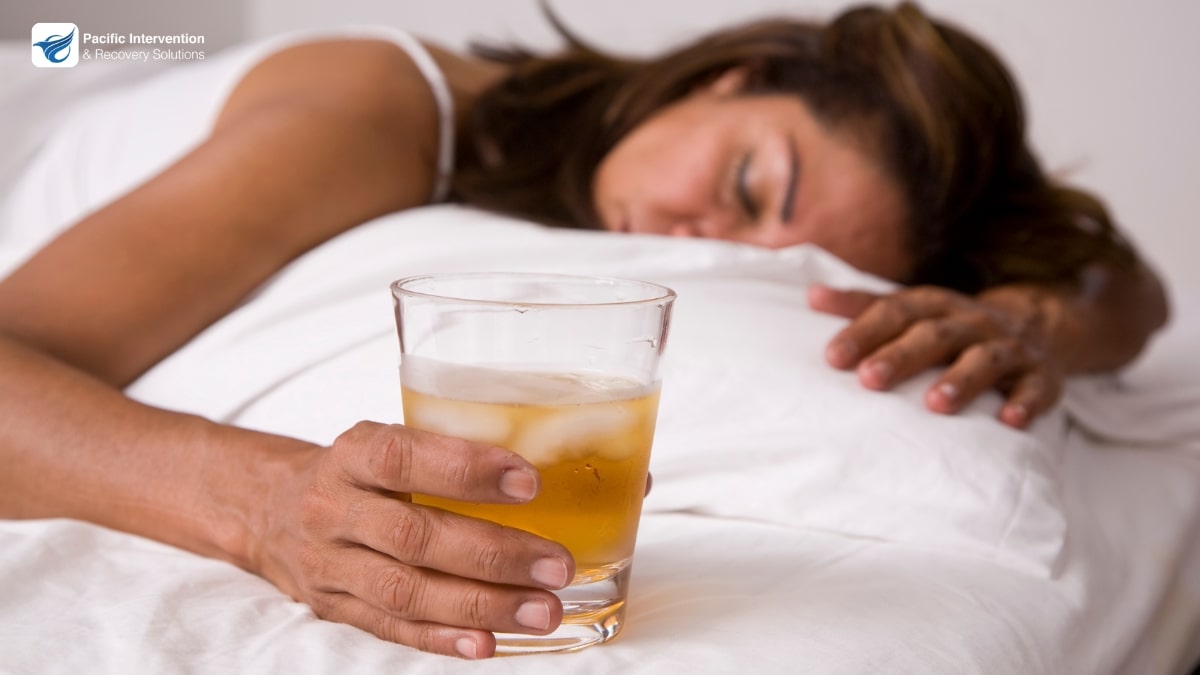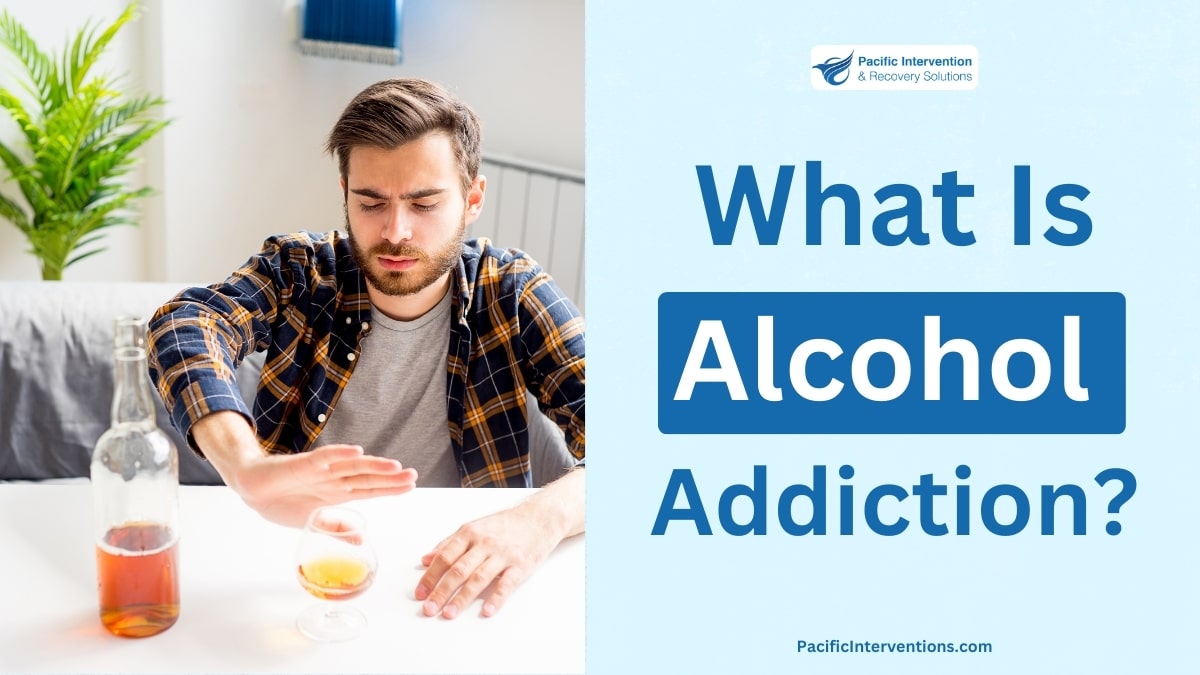Alcohol addiction has become a severe health problem in recent years. Numbers show a dreading picture, with one in 5 Canadians meeting the criteria for alcohol abuse. But what is alcohol addiction, and what’s the separating line between casual drinking and alcoholism?
Today, we will try to answer these questions. We will offer insights on symptoms, causes, and different treatment methods. So, if you or your loved ones are struggling with this problem, or simply wish to learn more about alcohol misuse, keep reading.
Alcohol Addiction, an Overview
According to the National Institute on Alcohol Abuse and Alcoholism, Alcohol use disorder (AUD) is a brain disorder marked by excessive drinking, in which the user is unable to stop or control alcohol consumption.
Studies show that AUD can leave lasting effects on the brain, making recovery increasingly challenging over time.

How Does Alcohol Affect the Users?
Alcohol affects the body in multiple ways, mainly by interfering with the central nervous system. As a strong depressant, alcohol slows down brain activity, making it difficult for users to think clearly and move normally.
But that’s not all. Research shows that alcohol affects other organs as well, including heart and liver. Alcohol overconsumption can cause serious heart issues over time, leading to serious health problems such as cardiomyopathy, arrhythmias, stroke, high blood pressure, and heart failure.
Physical vs. Psychological Dependence
Generally, alcohol addiction can be categorized into physical and psychological dependence. In physical dependence, individuals experience intense cravings and may even see symptoms of withdrawal in severe cases. This includes sweating, anxiety, panic attacks, etc.
Psychological dependence, on the other hand, refers to the mentalcomfort one seeks through ongoing drinking. This is usually seen in cases where individuals use alcohol as a coping mechanism for other issues.

Alcohol Addiction vs. Alcohol Abuse
A term that is mistakenly used interchangeably to talk about alcohol addiction is alcohol abuse. However, it’s essential to note that these are not the same.
Alcohol abuse refers to the overconsumption of alcohol from time to time, over even on a regular basis. Those involved in a pattern of alcohol abuse can modify, control, or even stop their harmful use of alcohol on their own, given sufficient health, or social consequences. If they do return to alcohol use the abuse pattern is not repeated.
Individuals with an addiction to alcohol (AUD) can present with the same patterns as someone who’s abusing alcohol. However, over time their ability to control the consumption of alcohol and avoid significant health and social consequences diminishes. Oftentimes in the earlier stage of an alcohol addiction (AUD), it can be confused as alcohol abuse. As the alcohol addiction progresses the difference becomes more and more visible.
Please note: This is not a comprehensive look at the differences between alcohol abuse and alcohol addiction (AUD), but rather a broad overview. To make a clear determination between one or the other, a clinician would need to evaluate and review to see if certain diagnostic criteria are present.
Signs and Symptoms of Alcohol Addiction
Now that we’ve covered the basics, it is time to discuss the signs and symptoms of alcohol addiction:
- Inability to stop and control your drinking
- A powerful need to use alcohol regularly
- Alcohol consumption, regardless of the environment
- Spending less time with normal life activities to consume alcohol
- Increasing alcohol consumption due to increased tolerance level
- Experiencing symptoms of withdrawal after a period of alcohol consumption
Note that these are just some of the signs of alcohol addiction and may not be seen in all cases. For more information and expert diagnosis contact our team.

Underlying Causes of Alcohol Addiction
When trying to uncover the causes of alcohol addiction, there are different factors to consider:
Internal Factors
Internal factors play a significant role in developing alcohol addiction. Genetics, family history, brain chemistry, and mental health problems are among the main causes that lead to alcoholism.
Studies have shown that those with a history of anxiety, depression, post-traumatic stress disorder (PTSD), and attention-deficit/hyperactivity disorder (ADHD) are at higher risk of developing an alcohol addiction (AUD).
External Factors
External factors also play an important role in developing alcohol abuse and addiction. Peer pressure, easy access to alcohol, lack of education, and environmental stressors can all cause a reliance on alcohol as an answer.

Treatment Options for AUD
Today, there are several evidence-based treatment options to help those with AUD. Healthcare providers assess the person’s situation and depending on their physical condition and personal needs, recommend either in-patient or out-patient programs to start treating the underlying imbalances associated with alcohol addiction (AUD).
Detox and Withdrawal
Treatment programs often begin with a period of detoxification, in which the symptoms of withdrawal are treated. Alcohol withdrawal symptoms are treated using prescribed medications over a few days in mild cases or up to a couple of weeks in more severe cases. Alcohol withdrawal risk factors can be up to and including death, so detox should be done under the supervision of a medical professional.
Medications
Using medication is a popular approach to reduce physical and mental discomfort associated with alcohol withdrawal. The most commonly prescribed medication for alcohol withdrawal are Gabapentin and Benzodiazepines.
Gabapentin is prescribed as a pain reliever and as an anticonvulsant. It can also help with anxiety, insomnia and even reduce alcohol cravings in some people.
Benzodiazepines such as Valium and Ativan are prescribed to increase GABA activity which helps reduce stress on the nervous system. These medications also help alleviate the pain and discomfort associated with alcohol withdrawal.
Naltrexone and Disulfiram can be prescribed post-withdrawal. Naltrexone can be prescribed to help reduce alcohol cravings. Disulfiram also known as Antabuse can be prescribed to stop alcohol use by creating a sensitivity to alcohol.
Always talk to your healthcare provider about the risks and side effects of each of these medications.
Therapy
Therapy is one of the most effective methods to help individuals with alcohol addiction (AUD). During therapy sessions, patients are encouraged to speak freely about the reasons that have led to alcohol addiction and find the roots of their problems.
Sometimes, depending on the case and the patient’s needs, the therapist suggests group sessions, and family or couple counseling. Therapy sessions also help patients find healthy coping mechanisms instead of cycling back to drinking.
Support
Recovering from alcohol addiction is a long and challenging battle that requires patience and dedication. In this battle, having a strong support system is invaluable. Support groups, family, and friends can greatly assist during and after recovery. An open communication with loved ones can help create meaningful connections and promote healing.
Find Healthy Habits
Finding healthy habits can improve your recovery process and distract you from cravings. Exercise, even moderate versions, helps your body recover and detox faster. Meditation is another excellent method that allows you to reduce stress, focus and gain clarity.
Final Words
As seen in this blog a multitude of different factors come together to create an addiction to alcohol. Knowing how this condition developed in the first place is important, however, once it has developed knowing how to treat it becomes paramount.
At Pacific Interventions, we have a team of professionals ready to assist you through the journey of recovery. We offer inpatient rehab, outpatient treatment, alcohol addiction interventions, and after-care programs, ensuring you find the right solutions. For more information and details, simply contact us, we’re here to answer all your questions.





